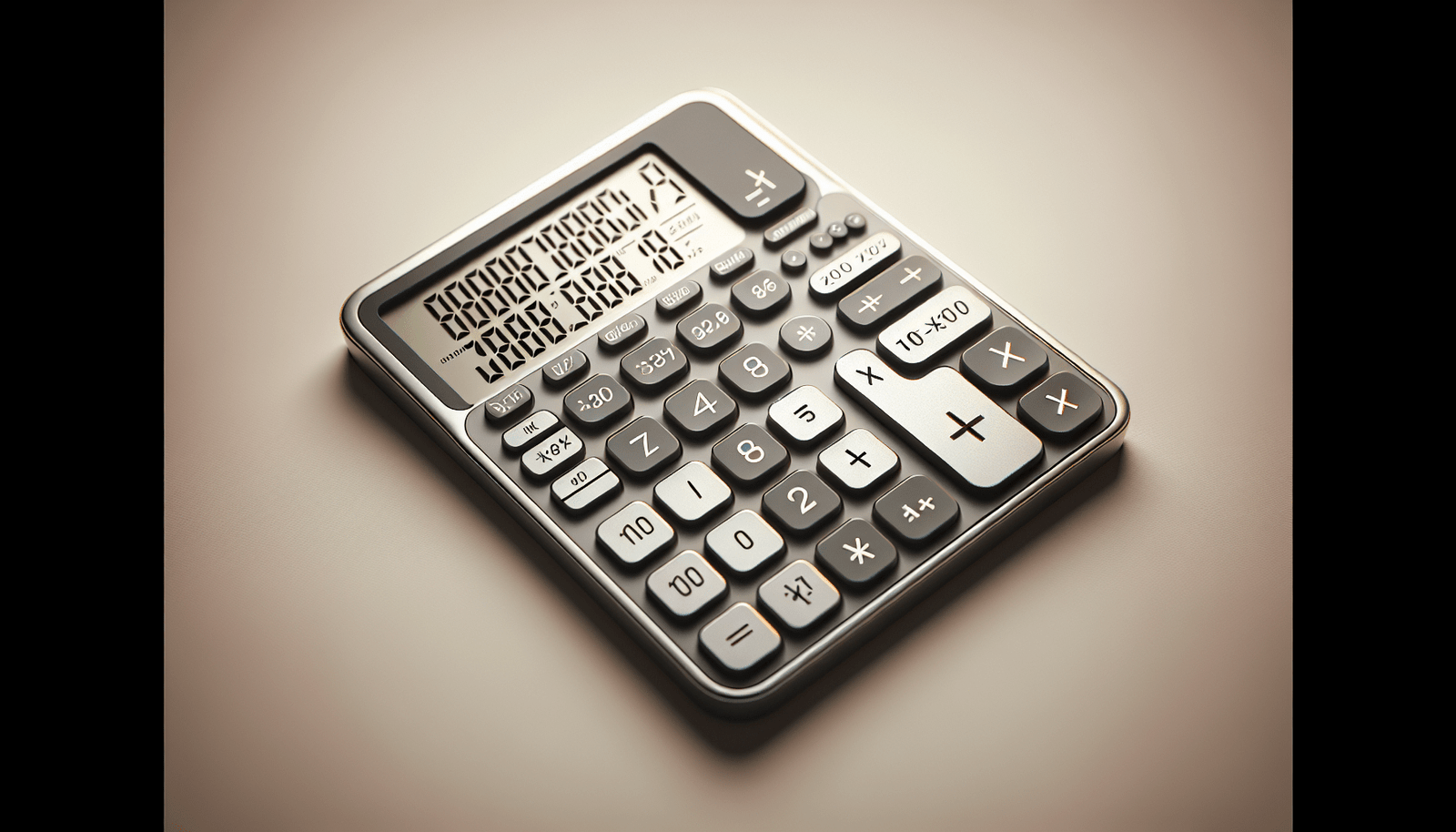Have you ever wondered how scientists and engineers manage to work with incredibly large or small numbers without losing accuracy or time? Often, these professionals utilize a method known as scientific notation. In this detailed guide, you’ll learn how to use a scientific notation calculator to make quick and accurate calculations with these specialized numbers.
 Scientific Notation Calculator
Scientific Notation Calculator
Scientific Notation Calculator
A scientific notation calculator is an invaluable tool that helps you convert and perform mathematical operations on numbers expressed in scientific notation, engineering notation, and e-notation. These calculators not only help in conversions but also allow for operations like addition, subtraction, multiplication, and division, making your calculations much easier to manage.
Using a Scientific Notation Calculator is incredibly beneficial in simplifying complex mathematical problems and converting numbers to formats that are easier to grasp.
Directions for Use
Scientific Notation Converter
With the scientific notation converter, you can easily convert a given number into various formats. Here’s how:
- Input Format: Enter the number, which can be a positive or negative integer or a decimal (expect zero).
- Scientific Notation: Format your number as (a \times 10^b). For example, 4×10^-3.
- E-Notation: Represent your number as (ae^b). For example, 5.2e12.
- Decimal Real Number: Just enter the number as it is, for example, 3.876.
Scientific Notation Calculator
The scientific notation calculator not only converts numbers but also performs various mathematical operations with them. You can:
- Enter the whole number parts of X and Y and their corresponding powers of 10.
- Specify precision: the number of digits after the decimal point in the final answer.
- Choose the necessary operation—addition, subtraction, multiplication, or division.
Definitions and Algorithms
Notations
Understanding different notations is key to using this calculator effectively:
- Scientific Notation: Format shown as (a \times 10^b). E.g., 9,000 = 9 × 10³.
- Engineering Notation: Similar to scientific notation but with exponents in multiples of 3. E.g., 4.45 × 10⁶.
- E-Notation: A variation where “10 to the power of” is replaced by “e”. E.g., 2e⁴.
Conversion Steps
To convert a number to scientific notation, follow these steps:
- Write down the significant digits, placing the decimal point after the first digit.
- Determine the power of 10 by counting the positions you moved the decimal.
- If the decimal moves right, the exponent is positive; if left, it’s negative.
For example: 678,000 becomes 6.78 × 10⁵
Mathematical Operations
Addition and Subtraction
Adding or subtracting numbers in scientific notation involves some simple steps:
- Equalize Exponents: Convert numbers to have the same power of 10.
- Perform Operation: Add or subtract the significands.
- Adjust Result: Convert back to scientific notation if needed.
Example: (5 × 10⁸) + (3.5 × 10¹⁰) becomes: 5 + 350 = 355 Result: 3.55 × 10¹⁰
Multiplication and Division
Here’s how you can multiply or divide numbers in scientific notation:
- Separate Parts: Split significands and exponents.
- Perform Operation on Significands and Exponents: Multiply or divide significands, and add (for multiplication) or subtract (for division) the exponents.
- Convert Result: Adjust to scientific notation if necessary.
Example: (3.2 × 10⁻⁵) / (1.6 × 10⁻⁷): Significands: 3.2/1.6 = 2 Exponents: -5 – (-7) = 2 Result: 2 × 10²
Finding the Square
To square a number:
- Multiply the number by itself.
- Adjust to scientific notation if needed.
Finding the Square Root
For even exponents:
- Compute the square root of the significand.
- Halve the exponent.
For uneven exponents:
- Adjust to even by multiplying the significand by 10 and reducing the exponent by 1.
- Follow even exponent algorithm.
Real-Life Examples
Scientific notation finds application beyond just science and engineering. Here are some common instances:
- Large Numbers: Earth’s population is about 8,000,000,000 or 8 × 10⁹.
- Small Numbers: Microchip linewidths can be around 0.00000013 meters or 1.3 × 10⁻⁷ meters.
The notation simplifies comprehending and verbalizing these figures.
Related Calculators
For further mathematical explorations, consider using:
| Calculator Type | Description |
|---|---|
| Scientific Calculator | General purpose scientific calculations. |
| Scientific Notation Converter | Converts between different notations. |
| Binary Calculator | Performs binary number calculations. |
| Hex Calculator | Operates on hexadecimal numbers. |
| Standard Form Calculator | Converts to and from standard form. |
| Math Equation Solver | Solves various algebraic equations. |
If you ever need to process large datasets or perform complex calculations, these tools can save you a lot of time and effort while ensuring accuracy.
Conclusion
By utilizing a scientific notation calculator, you can save precious time and minimize errors when working with incredibly large or tiny numbers. Whether you’re an engineer, scientist, or just someone who frequently deals with extensive calculations, these tools simplify the process, making your workflow considerably smoother.
Try incorporating scientific notation into your daily calculations, and see how much easier it makes handling those intimidatingly large or small numbers.
